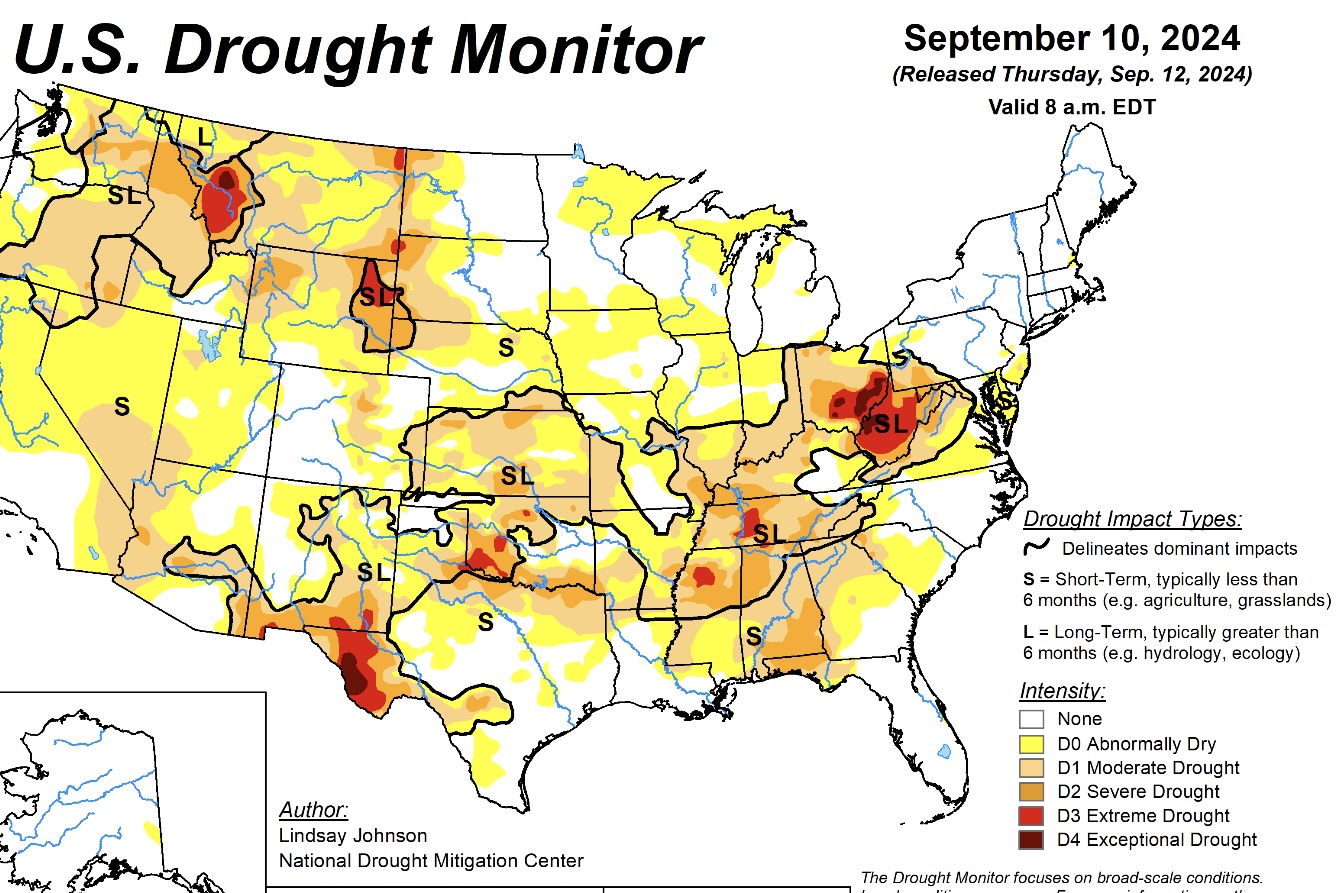Headlines
Will the Midwest drought impact maple production?
Some areas in severe conditions
By LES OBER, OSU EXTENSION MAPLE SPECIALIST | OCTOBER 10, 2024
BURTON, Ohio—Climatic conditions are once again posing a possible weather threat to maple syrup producers.
Western and Southern maple producing regions of United states are now part of an Abnormally Dry to Exceptional Drought pattern.
Of major concern to maple producers, is how the drought will affect the 2025 season. Currently, there does not appear to be a threat to New York and New England, where too much rain has caused other issues. That could all change if the drought shifts north and east.
The extreme drought and exceptional drought is concentrated in West Virginia and Southeastern Ohio, and has spread to the Upper Midwest.
However, large portions of other states are experiencing Abnormally Dry to Moderately Drought conditions.
Of greater concern, would be for this drought to extend into the winter and beyond. Snow accumulation during the Winter has a major impact on recharging the subsoil and sap flow. The subsoil moisture is everything when it comes to sap production.
The greatest impact would be from an extended drought, that reoccurs over multiple years.
When you mention drought to a maple producer, their biggest concern is the possibility of long-term impact on their trees.
The effects of a drought on maple trees occurs above and below ground. During a drought the air temperatures increase, and many times wind speeds will also increase. This causes an acceleration of the evapotranspiration at the leaves.
Moisture Tree moisture is lost through tiny leaf openings called stomata. This causes the leaves to dry out and crinkle. Below ground the fibrous hairs on the roots are lost. Root hairs are responsible for the collection of soil moisture.
During a drought when soil moisture declines there is a reduction of the amount of water entering the tree.
This also causes the leaves to dry out and, in some cases, drop early. Dry conditions can also trigger die-back in the canopy, but dry weather is not the only cause of maple dieback. Healthy trees can withstand the effects for one season partial drought.
This Depends on the drought severity. As severity increases the producer might want to cut back on tapping stressed trees or restrict the number of taps per tree.
If the drought should continue into a second year the producer might want to consider skipping tapping a sugarbush in the spring of the second year. Again, this is dependent on the severity and length of the drought, as well as tree health.
Another often asked question, will the drought lower the sugar content of my sap? The answer is yes, no, maybe.
Drought can impact photosynthesis in the tree! This happens when the leaf stomata close to point they no longer allow CO2 to enter the tree.
The result is a decline in photosynthesis resulting in reduced growth rate and reduced sugar production. However, unlike a single season crop, a tree is not dependent on one year of growth to produce sugars to survive.
In the case of a maple tree sugars are stored in multiple location throughout the tree. When we tap, we collect sap that contains sugars that were produced and stored over multiple years.
The drought may reduce the amount of sap flow but the impact on the sugar content can be minimal, depending on the severity and the length of the drought.
Remember a lot can happen between now and the tapping season. The remnants of a hurricane moving up the coast can bring heavy rains that can quickly change everything. How the 2025 season will be impacted will depend on the weather and climate conditions over the winter going into the next season.
In Ohio we have two excellent Climatologist studying our changing weather patterns and advising our agricultural producers.
OSU Extension Climatologist Dr. Aaron Wilson and NOAA Weather Meteorologist/Climatologist Jim Noel. Both agree; the current weather pattern is not behaving as predicted. A transition to a La Nina pattern was predicted this fall.
This should have brought normal precipitation to the state. However, it has been slow to develop. It may happen but it will be weaker than normal. This could mean that the dry weather will continue into November.
Precipitation may not increase until the first of the year. This poses the question; will the trees have enough moisture to recover before tapping begins. Normally the answer would be yes. In a normal year, the rain snow produced in December and January is enough to recharge the trees.
However, with the prospects of tapping being pushed up to the first week in January and the amount of syrup produced in the first couple of weeks of the 2024 season, the answer could prove to be very interesting.
Stay tune for updates.
































